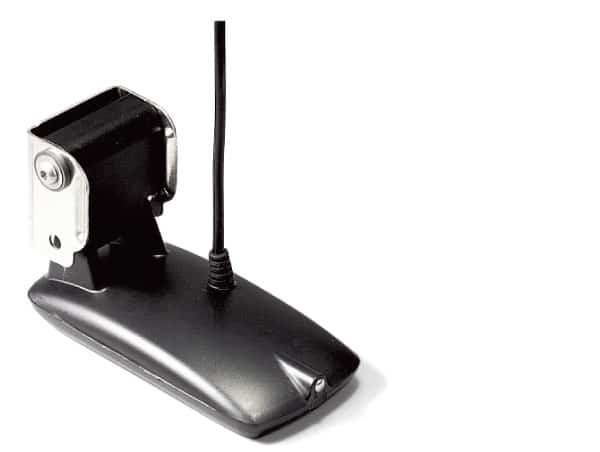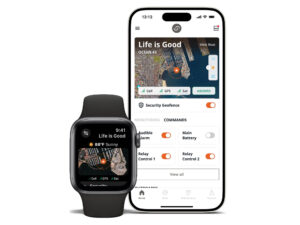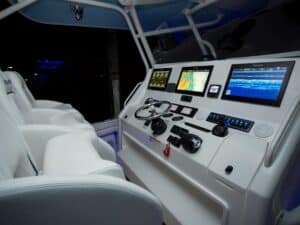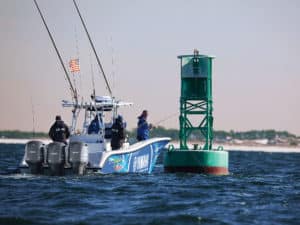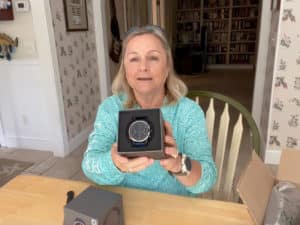Side-scan, or side-imaging, sonar has always intrigued me. Perhaps that’s because I’m a scuba diver, and I’ve experienced the underwater world in three dimensions. So when I try to wrap my mind around what side-scan “sees,” I picture myself diving beneath the boat.
I imagine how a sonar ping, focused along a sharp edge — like a slice through the water column on either side of the boat — would return a picture of structure and fish. Humminbird marketing director Mark Gibson puts it this way: “Say you’ve got a handful of BBs. Using traditional sonar is like slamming those BBs on a concrete floor. Imagine how many of those will bounce back up — lots. Side imaging is like throwing BBs down a driveway. Imagine how few would come back; maybe only one or two return toward you from hitting a rock.
“Side imaging is all about how sensitive the receiver is, how it filters out noise.”
Structural Integrity
That issue of returns speaks to why Humminbird and Navico (Lowrance/Simrad) emphasize finding structure, more so than fish, with their recreational side-scan units. Humminbird offers a range of multifunction displays with side imaging included ($1,049.99 to $2,799.99); Navico offers its StructureScan as a black-box add-on ($599) that pairs with many Lowrance and Simrad MFDs. However, that doesn’t mean anglers won’t see fish, particularly large schools of baitfish.
“Where StructureScan really shines and makes me look like a champ is finding bait,” says Capt. Kevin Beach, a Venice, Louisiana, offshore guide who uses a Simrad NSE display with the original StructureScan module that first debuted in 2009. “From now until October, we’re fishing almost exclusively threadfin herring [for tuna]. They like the sand bottom, and they’re not generally structure oriented.”
Beach also can see cobia milling about the legs of offshore rigs with StructureScan. But because recreational side-scan is really limited to depths shallower than 300 feet, its uses offshore are more specific to bait, shallow-structure and upper-water-column species.
Florida captain Sam Heaton, Humminbird field promotions manager, uses side-scan offshore and inshore. “I use it inshore anytime I look around bridge pilings or docks or under boats. Structure has a shadow [that’s adjacent to it on the bottom]. You read that shadow to determine how high the structure is. Anything suspended doesn’t have as big a shadow on the bottom — that’s the way you tell fish from structure.”
Individual fish show as white streaks, as long as the sonar beam passes them lengthwise. If the fish is facing the beam, it shows as a dot. In addition, a hard background of rock appears white on screen; fish against that background just blend in.
The same distance and direction issues found with traditional sonar translate similarly with side-scan. “If you see a target on screen and it says it’s 40 feet to the left of the boat, you don’t know if that’s 40 feet out on the surface or 40 feet straight under the port side of the boat,” Gibson says.
Dialed In
When Humminbird introduced recreational side‑scan technology to anglers in 2005, its first units used 262 and 455 kHz frequencies. Today’s units transmit at 455 and 800 kHz. The higher-frequency pulses give side-scan its imagelike qualities.
The 262 kHz frequency created even illumination, but 455 eventually won out for its image quality and crispness, Gibson says. The 800 kHz beam is very narrow, and while it can provide even greater detail, it can fail to read drop-offs and soft bottom.
“You might see more of a difference with 800 when using down-scan,” says Lucas Steward, Navico product manager. Down-scan gives anglers a detailed look at what’s directly beneath the boat; both Navico and Humminbird offer that view. “Most anglers are really learning more about their traditional sonar now that they have down‑scan.”
Steward says Navico’s brand-new StructureScan HD ($599 black box with skimmer transducer) boosts the ability of the 455 kHz signal, creating the same or better resolution than the previous 800 kHz. StructureScan HD, coupled with Lowrance’s new HDS Gen2 display ($549 to $2,449) with the StructureMap function, allows anglers to overlay side-scan imagery to build a map of a specific area.
The Low-Down
Most smaller boats use transom-mount transducers for side scanning, but through-hulls are available for larger boats. Currently, both companies offer a plastic through-hull transducer, and Navico says its HD bronze version ($359 to $1,999.95) will start shipping in early November.
Anglers who own boats with a sharp deadrise at the transom can opt to mount a pair of transducers; each shooting a signal to capture information on its side of the V.
For all-around-the-boat viewing, Humminbird recently introduced 360 Imaging, which adds forward imaging to side and down imaging — dialing in structure and fish up to 150 feet from the boat. The hardware consists of a deployable transducer that’s raised and lowered when needed.
Due out at press time, 360 Imaging costs $1,999. “This doesn’t replace side imaging,” Gibson says. “I can use side imaging to find stuff, but with 360, I can sit there just off a dock and fish that spot. I can see fish move while I’m casting.”
That’s what you might call “virtual scuba diving.”
Trial Run
To better familiarize myself with side-scan and to discover what it really can do in muddy salt water — common conditions near my coastal Georgia home — I recently installed a Humminbird 998c SI Combo aboard my bay boat. I have a subsequent install scheduled with Lowrance to experience the HDS Gen2 with StructureScan HD.
Go to sportfishingmag.com/cwsidescan to view a video of the installations, along with future links to blogs and photos on how this technology works, as well as links to Humminbird and Navico videos on side-scan.
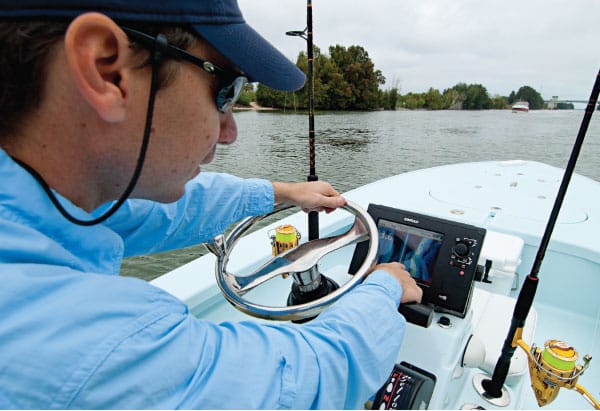
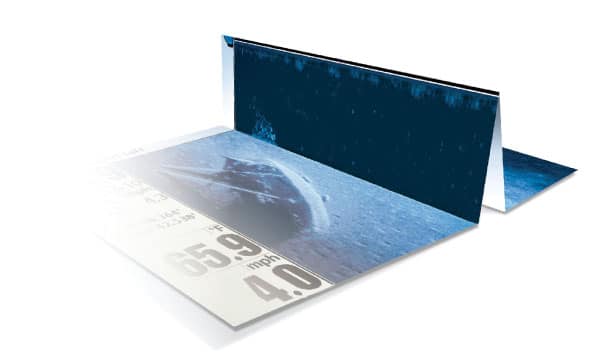
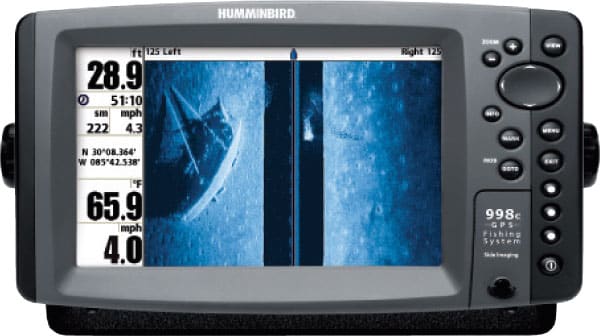
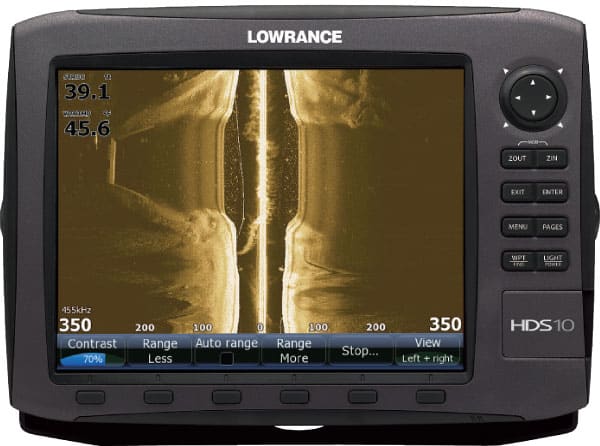
Trial Run
